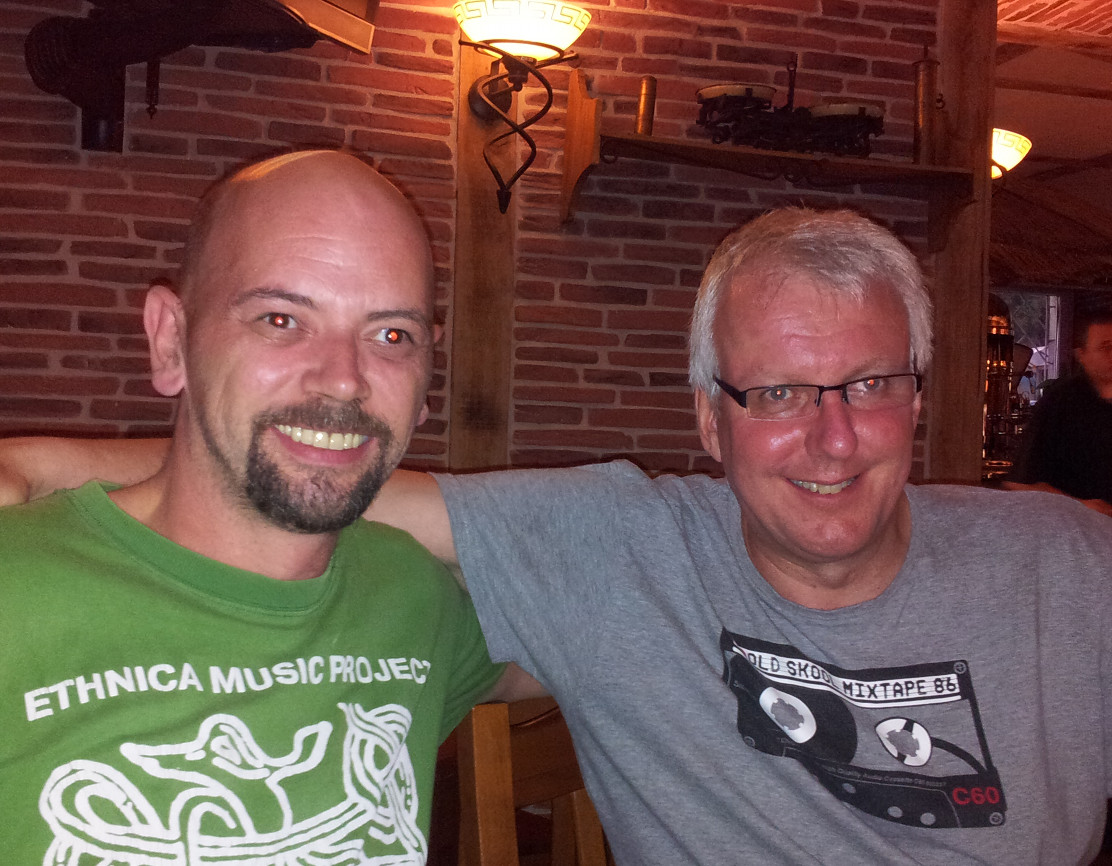A few years ago, at the start of April 2011, I had the great fortune to be introduced via Chris Gill on Facebook to Zsolt Galántai, Hungarian rock drummer extraordinare. His reply to my email to meet up was very positively ended – “Any kind of music adventure, I’m in!”.

So, fast forward a few weeks to the middle of May, 2011. Zsolt’s been practicing his drums for quite a while in a dingy underground cellar rented out underneath his old High School in a suburb of Budapest. I’m taking an armful of recording gear, mic stands, laptop, preamps, headphones, cables and stands to meet up with him, and to see what we can do together. The air is stale and cold, with a slight hint of damp lingering on the curved, vaulted brick ceiling. As you’d expect really from an underground cellar! One of the things I discovered almost immediately is that the sound of a Gretsch Maple outfit been played full whack in a small, sealed brick enclosure only just wide enough to accommodate the kit is to say the least, a deafening one! We tried out first of all recording a couple of my older tunes, “Landform” and “Flight of F”, to see how Zsolt could handle these with a view to live playing. Setting up a click track, then recording the results back into the original projects.
One of the rarities I’ve found over the years is a drummer who can actually defer his built-in timekeeping capability to a click track. As mad as that sounds, it’s important at least for electronic music for the sequencer to keep time, and for the drummer to play to that time. The number of technically perfect drummers I’ve met over the years, perfect timekeepers in fact, that fall apart at the seams when asked to drum to somebody else’s timekeeping! Needless to say, his work was spot on. It’s great when you get the sound of acoustic percussion blended into something very cold and synthetic, it comes out the other end so transformed.
I was thinking where to go next with my new found power. Wouldn’t it be good, I mused, to try something a little less in the “comfort zone” of predictable 4/4 tempo electronic, bearing in mind that I now had, at my disposal, a munificent powerhouse of percussion. Then it hit me – what about a conceptual framework where Berlin School is still key (in other words, where sequencers provide the backbone) but pushed to the absolute limit with real drums and guitar – and with strange time signatures to boot? Why not!
Armed with a selection of signatures (4/4 is only present on the “bonus tracks” – these were part of the initial “tryout” sessions with Zsolt), we set up various click tracks and let Zsolt essentially solo for as long as it took, and recorded the results. What we ended up with over the course of two months or so was a variety of sequence-locked drum sessions. Yes – that’s right – just drums. Zsolt effectively wrote each of the pieces by playing his drums in a certain way, before the music was even conceived. Which is why he is getting equal credit all the way through this exercise.

And this is when the fun really started! I decided quite early on to create two different compositions for each one of the drum sessions. Initially, this was to try and then pick out which were the more promising candidates for final selection. Each track has a sequencer laid down as the first part of the musical composition. On some tracks, it’s a piano. On some, it’s a bassline. On some, it’s — well, sounding like a sequencer, but all holding true to the “Berlin School” style of composing. Over the course of the next year and a half, a total of fourteen pieces emerged. I stayed in contact with Zsolt through the internet, getting feedback as I went, even though for most of this time I was alternating between the UK and Hungary with work commitments. The tracks were pretty much falling into two separate camps (I’m loath to use the word “genre” or “category”). To me, some felt “light”, and some “dark”. Generally the “darker” pieces were more guitar heavy, but it was more a mood feeling. And you can guess what happened next – we ended up keeping them all!
I met up again with Zsolt in Budapest back in September/October 2012 to get the mastering completed. It was very important to me to make sure that he was happy with the mix too, there were lots of changes to the overall drum settings at this point which really made a difference.
And finally, the artwork was completed by Angiewoman to reflect the “light” and “dark” of what is now “Signatures I.” and “Signatures II.”
— Dave Pearson
Great albums. Klaus Schulze has competition. Keep going…
What can i say, i have all albums and every album is an masterpiece of elements that makes it all.
Thanks very much Marc! 🙂